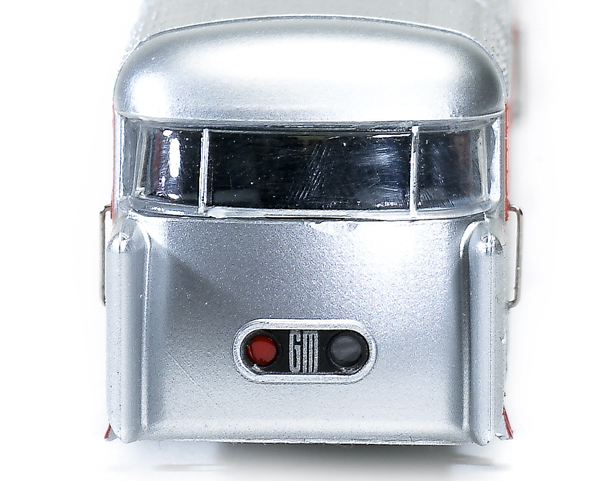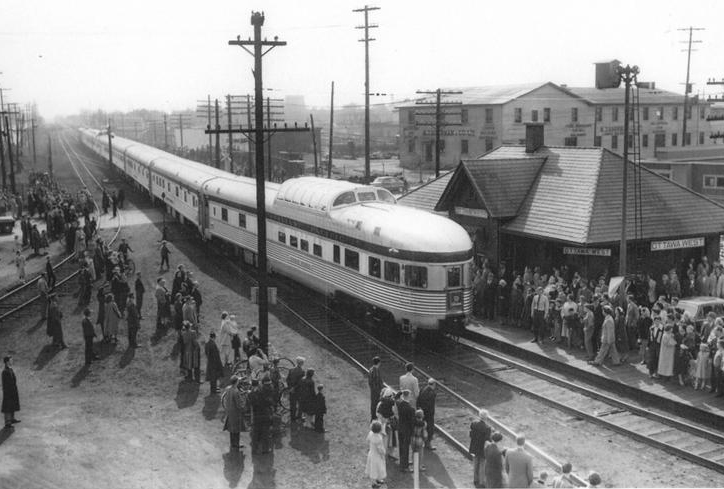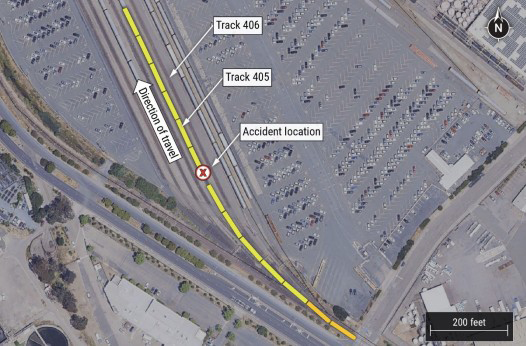Prototype history. The two nine-car Aerotrains were each powered by a single LWT12 locomotive, a streamlined, regeared version of the SW1200 diesel switcher with one Flexicoil truck and an unpowered rear axle. The Aerotrain could reach a top speed of 102 mph. A third LWT12 was built for use with Rock Island’s Talgo-built Jet Rocket.
The coaches were General Motors’ 40-seat intercity bus bodies widened 18″ and mounted on a two-axle steel underframe. The vestibules were located where the driver and engine compartments would be on a bus. Rubber bellows gave the coaches a bus-type air suspension.
During 1956 and ’57, the Atchison, Topeka & Santa Fe; New York Central; Pennsylvania RR; Rock Island; and Union Pacific tested the Aerotrain. Despite its sleek appearance, the Aerotrain never caught on. Electro-Motive Division sold both Aerotrains to Rock Island in 1958, which used them in commuter service in Chicago. In 1966 the Aerotrains were retired.
Like the HO scale version, the N Aerotrain LWT12 has a finely detailed injection-molded plastic body shell with separately applied wire grab irons, a detailed cab interior with two painted crew figures, and clear window glazing with printed windshield wipers. The LWT12 has separately applied Aerotrain emblems, which were mounted crooked on our sample.
The body shell is held on the frame by six tabs (three on each side) that are evenly spaced between the front truck and rear axle. The manufacturer recommends using a toothpick or a similar soft prying device to remove the shell. Don’t use a screwdriver, as this may damage the shell.
The locomotive has a die-cast metal chassis, which accounts for most of the train’s 5.7 ounces of weight. A five-pole skew-wound motor is seated in the fuel tank with a printed-circuit (PC) board on top.
The locomotive has two traction tires to increase pulling power. Since the non-traction-tire equipped wheelsets on the locomotive and the wheels on all the cars pick up electricity, the train runs through turnouts without stalling.
The four-axle Flexicoil truck is covered by skirts attached to the chassis. The skirts pivot freely, allowing the locomotive to negotiate tight curves. The single-axle rear truck also has some play so it can follow curves. The blackened nickel-silver wheels are mounted on split axles and are correctly gauged.
As on the HO model, beams from a group of light-emitting diodes (LEDs) are reflected through plastic light bars to illuminate the nose headlights and number boxes. In reverse, the red marker light on the locomotive and white light on the tail car are illuminated.
I also ran the Aerotrain on our N scale Carolina Central layout, and it passed over turnouts and the 93/4″ radius curves smoothly.
The passenger cars ride on single-axle trucks. The metal wheels (mounted on plastic axles) were out of gauge on all three cars. I fixed them by twisting the wheels back into gauge.
Since the four-unit Aerotrain is wired as one circuit, the cars need to be oriented with the vestibule forward so the electrical connections can be made. The eight-pin plug from the locomotive and each coach must be connected to the socket in the adjacent car.
The full-width vinyl diaphragms are cleverly designed. Each one is mounted on a steel pin so it can move as the train operates on curves, and magnets in the striker plates hold the cars together so they don’t separate.
Per the manufacturer’s recommendations, the wires from each eight-pin plug should be run under the diaphragms so they can move from side to side as the train runs through curves.
The Aerotrain is one of the most recognizable streamlined trains of the 20th century, and Con-Cor has done a great job re-creating it in N scale. Those looking to model the full nine-car train can do so with the three-coach add-on sets, priced at $219.98 each.
Price: $429.98 (engine, two coaches, and tail car). Three add-on coaches $219.98
Manufacturer
Con-Cor International
8101 E. Research Ct.
Tucson, AZ 85710-6758
www.all-railroads.com
Road names: General Motors Demonstrator; Atchison, Topeka & Santa Fe; New York Central; Pennsylvania RR; Rock Island; and Union Pacific. Painted silver but unlettered version available.
Features
Detailed car interiors
Diaphragms between cars
Five-pole skew-wound motor with dual flywheels
Light-emitting diode interior lighting with printed-circuit boards in each car
Painted crew figures
Reversing headlights and tail car backup lights
Weight: 5.7 ounces















